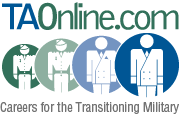Title:Resumes that Get You in the Door
Author:Robert Lindsey. All rights reserved.
20 Seconds is All You Get!
This is the average time that a potential employer takes to review your cover letter and resume and determine whether you should be granted an interview or not. While you might have spent hundreds of dollar on resumes and thousands of dollars on education, you have 20 seconds to sell yourself to a prospective employer! Your resume must market you by projecting a professional image. Your resume and cover letter should present your abilities and what you have accomplished in your previous jobs. It should make the reader want to meet you by asking - "How did he or she accomplish that?"
Eight Steps to Designing a Successful Resume:
- INVENTORY YOUR SKILLS - Review your skills, attributes, accomplishments, abilities, strengths, weaknesses, personal interests, desires, etc., to determine the most pertinent examples to include in your resume.
- DEFINE YOUR OBJECTIVE - Be as specific as you can. It will make you look as if you've done your homework.
- TARGET YOUR FIELD/INDUSTRY - Use a specific job objective, resume format and appropriate language to target your chosen career field or industry.
- SPECIFY YOUR DESIRED EMPLOYER - Use a specific job objective, description of your accomplishments, skills and abilities, as well as the style and language of the employer's corporate culture to target a specific company or agency.
- CHOOSE A RESUME FORMAT - Base your resume on one of two formats: Chronological, to emphasize your past experience, or Functional, to emphasize your skills. Either should be targeted at a specific industry and tailored to each individual employer.
- COVER THE BASICS - Make sure you include in your resume at least the following basics: name, address, email address, phone and fax numbers, job objective, education and training, pertinent job experiences, relevant activities and interests.
- WRITE YOUR RESUME - Before actually writing your resume, it is wise to read a resume writing guide and to study the examples provided for different industries and formats.
- ADD A COVER LETTER - Always include (unless there is a specific request not to) an explanatory cover letter as to why you are submitting your resume. Paragraph one should include who you are and why you are writing. Paragraph two should summarize your strongest and most relevant skills and accomplishments and their importance to the job, employer and/or company/agency. Paragraph three should conclude with a suggested action, appreciation for being considered and relevant contact information.
Eleven Tips for Designing a Successful Resume:
- Know your audience - use the vocabulary and language of your targeted industry.
- Write your job objective from the stand-point of what you can offer your prospective employer and/or company/agency.
- Describe your experiences from an accomplishment point-of-view (see "Accomplishment Statements" below).
- Present all information positively; if anything could be determined as negative, leave it out or rewrite it in the most positive way possible. Be honest, but don't present an easy reason to eliminate you from the selection process. Remember, a resume just gets you in the door for an interview; don't let a poorly written sentence eliminate you for even being considered!
- Use strong action verbs: achieved, directed, managed, initiated, created, developed, etc.; and positive modifiers: actively, substantially, effectively, efficiently, quickly, etc., for emphasis.
- Make your resume easy to scan and read. Use a layout and formatting that allows for quick viewing. Leave lots of open space. Keep it short and to the point. Eliminate all typos - use a spell checker and have others read it.
- A resume is flexible, if you feel that the standard headings; Objective, Experience, Education, and Activities do not emphasize your strengths, try alternative section titles; e.g., Community Service, Professional Affiliations, Awards, Achievements, etc. Include specialty items like MOS's, security clearances, ranks, etc., as many employers using resume databanks "search" using these criteria.
- Test your resume for relevancy - all information should directly support your job objective or work skills and abilities and target the job, employer and industry. If it doesn't, leave it out.
- Develop and maintain a list of references and have it available upon request. Don't clutter up your resume with references or include them in an initial mailing with your resume and cover letter.
- Make sure that the information in your resume and cover letter, e.g., employer's name title, address, position, etc., are accurate and up-to-date. Call or email ahead, if necessary, to get the proper information for the cover letter.
- Keep your resume and cover letter short and to the point. The longer they are, the less likely they will be read!
Seven Things to Avoid When Designing a Resume:
A resume is your advertisement. Anything that distracts the employer's attention from your strengths may cause them to discard your resume. The following is a short list of possible distractions:
- LACK OF BLANK SPACE - Too much text is imposing, and prevents easy scanning and reading. Be brief and concise. Use a clean format, as well as bold type and underlining to highlight section headings.
- TYPOS AND INCORRECT GRAMMAR - Spelling errors show that you are sloppy or did not bother to take the time to proof your work.
- MIXING VERB TENSES - Be consistent in whichever tense you decide to use, past or present.
- TITLES - It is obvious, and therefore unnecessary, to put "Resume of (name)" at the top of your resume. However, it does help to clearly title the sections of your resume, (e.g., Objective, Education, etc.)
- IRRELEVANT ACTIVITIES - Unless your hobbies and activities demonstrate an aspect of your strengths, use the space to list other, more relevant information.
- REFERENCES - Do not put references on your resume. Instead, at the bottom, put "References Available Upon Request."
- HEALTH, AGE, RACE, MARITAL STATUS - An employer assumes you are in good health if you are looking for a job, do not put your health status in your resume. It is illegal for an employer to ask about the other items, so do not volunteer the information, as it should be irrelevant.
Accomplishment Statements:
When preparing a resume, most people make the critical mistake of detailing their duties and responsibilities instead of highlighting their accomplishments. In advertising jargon, this would be selling the steak instead of the sizzle - a marketing error that could cost you an important interview.
A potential employer has only a secondary interest in the duties and responsibilities you performed in a previous job. So what if you commanded a tank platoon, or sold widgets to the aerospace industry, or were the senior accountant in a candy factory, or even the Vice President of Marketing for a furniture company? Titles and duties say nothing about performance (the sizzle), or what you can bring to this new employer that is unique and worthy of consideration. On the other hand, if your resume indicates that you out-performed all other division officers, increased widget sales by 20%, received a commendation award for improving the efficiency/productivity of your unit, discovered accounting errors that saved $50,000, or designed a new production system that reduced material costs, you can bet that they will be interested in interviewing you.
Your accomplishment statements need not be dramatic, but they should always enlarge upon your basic duties and responsibilities. The best way to do that is to quantify, by adding numbers or percentages, whenever possible. Here are some examples of the type of questions you should attempt to develop answers for:
- How many people did I lead and/or supervise?
- What amount or quantity of equipment/material was I accountable for?
- How large a budget did I manage or was responsible for?
- Did I save my organization significant time, money or other resources?
- By what percentage and/or number of dollars did I improve my organization's budget?
- Did I institute, or play a key role in developing, new and effective safety, training, or administrative programs?
It is this kind of self-questioning that will help you develop accomplishment statements that will generate employer interest. Remember, you're the product - your accomplishments are the sizzle!

